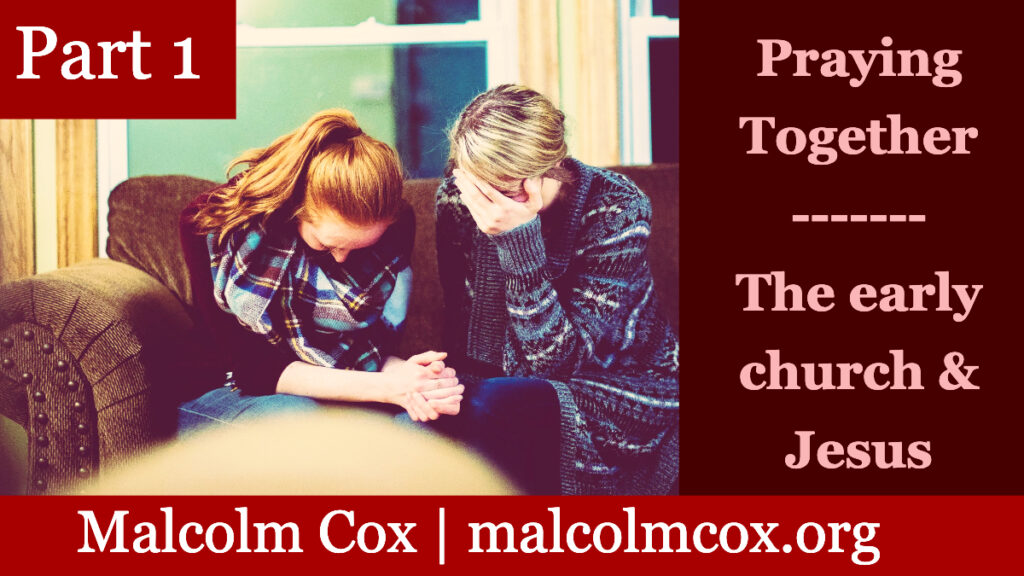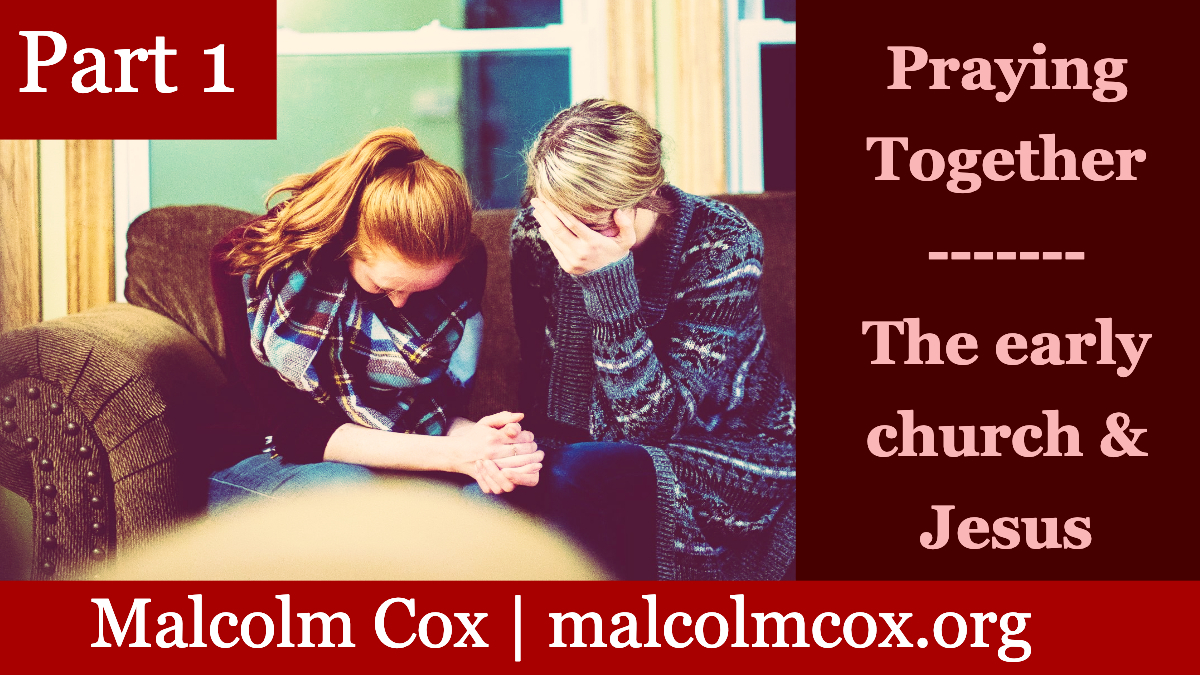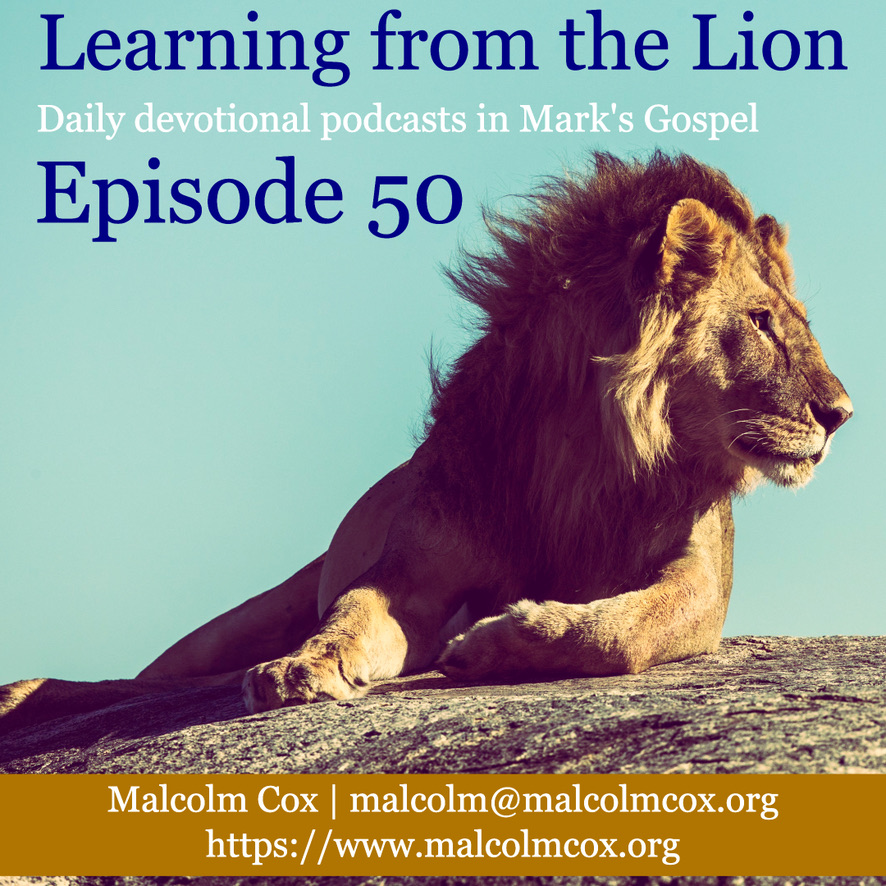
A teaching class for the Thames Valley and Watford churches of Christ
Class 1: Praying Together
Introduction
In this class and the one to follow, we will examine what the Scriptures teach about praying together. Why not make this month of March one where you focus on praying with other believers?
- The early church prayed together.
- “They all joined together constantly in prayer, along with the women and Mary the mother of Jesus, and with his brothers.
- When they heard this, they raised their voices together in prayer to God. “Sovereign Lord,” they said, “you made the heavens and the earth and the sea, and everything in them.” (Acts 1:14; 4:24 NIV11)
- “Paul and Barnabas appointed elders for them in each church and, with prayer and fasting, committed them to the Lord, in whom they had put their trust.” (Acts 14:23 NIV11)
- “When Paul had finished speaking, he knelt down with all of them and prayed.” (Acts 20:36 NIV11)
- “Every man who prays or prophesies with his head covered dishonours his head. But every woman who prays or prophesies with her head uncovered dishonours her head—it is the same as having her head shaved.” (1 Corinthians 11:4–5 NIV11)
- “Therefore I want the men everywhere to pray, lifting up holy hands without anger or disputing.” (1 Timothy 2:8 NIV11)
- “Is anyone among you sick? Let them call the elders of the church to pray over them and anoint them with oil in the name of the Lord.” (James 5:14 NIV11)
- We will examine more of what this might mean in the second class. But today, the point is to establish that praying together was a normative part of being a Christian and part of the Christian community.
- Jesus assumed we would pray together.
- The Lord’s Prayer
- ‘The Lord’s Prayer is written in the plural. Its very first word is addressed to ‘Our’ Father in heaven. Not my father. Not your father. Ours. This is a family thing. ‘Give us our daily bread … forgive us our sins’ and so on. When we pray the Lord’s Prayer we do so corporately, in community with others – not just personally and spontaneously but liturgically in unison with millions of Christians around the world today, and in fellowship with the communion of saints stretching back to those first twelve apostles gathered around Christ as he gave them this prayer. We are not designed to hallow the Father’s name entirely on our own. It’s not enough just to download resources for solitary prayer and worship from the internet. We all need the encouragement, the challenge and the discomfort of active participation in a local worshipping community.’ Pete Greig, “How to Pray”
- What difference does it make when we pray the Lord’s prayer together rather than on our own?
- The Lord’s Prayer

Conclusion
- Today we have established that it was customary for the church to pray together.
- Individual prayer is a vital part of our growing maturity and strengthening our relationship with God. But learning to be a praying community is just as crucial.
- Why not make March the month where you will experiment and explore praying together with your spouse, other members of your family, housemates, people in your family group, location, or even beyond your regular church community?
- If you have any questions or suggestions for the next class, please send them to me, malcolm@malcolmcox.org.
Please add your comments on this week’s topic. We learn best when we learn in community. Do you have a question about teaching the Bible? Is it theological, technical, practical? Send me your questions or suggestions. Here’s the email: [malcolm@malcolmcox.org](mailto:malcolm@malcolmcox.org). If you’d like a copy of my free eBook on spiritual disciplines, “How God grows His people”, sign up at my website: http://[www.malcolmcox.org](http://www.malcolmcox.org/). Please pass the link on, subscribe, leave a review. “Worship the LORD with gladness; come before him with joyful songs.” (Psalms 100:2 NIV11) God bless, Malcolm


